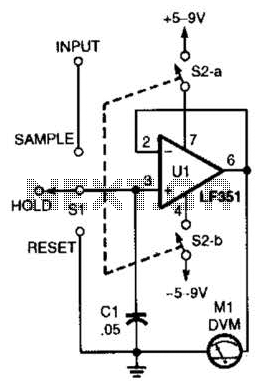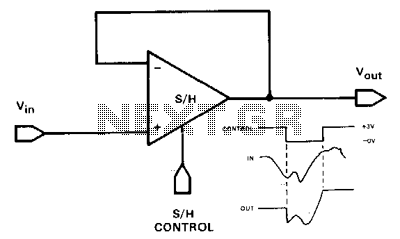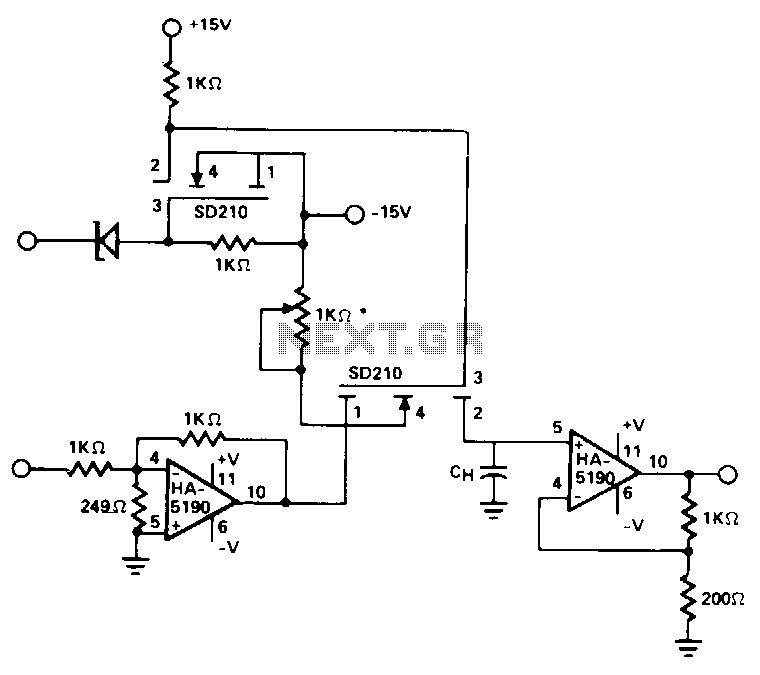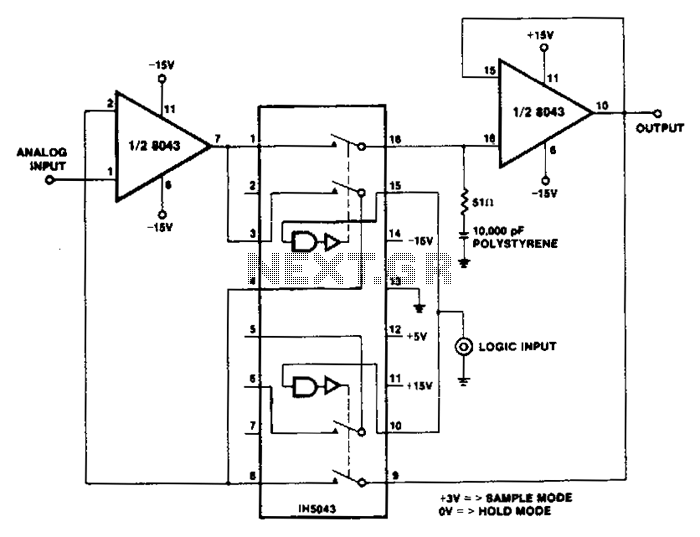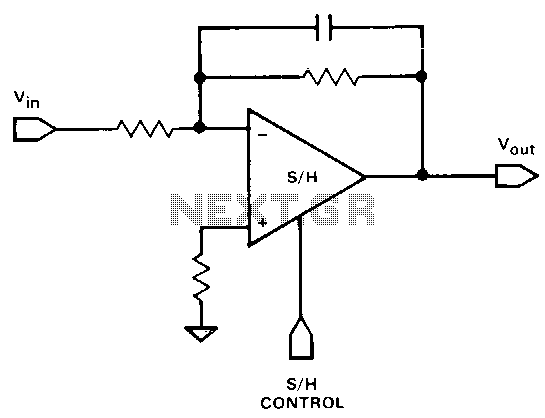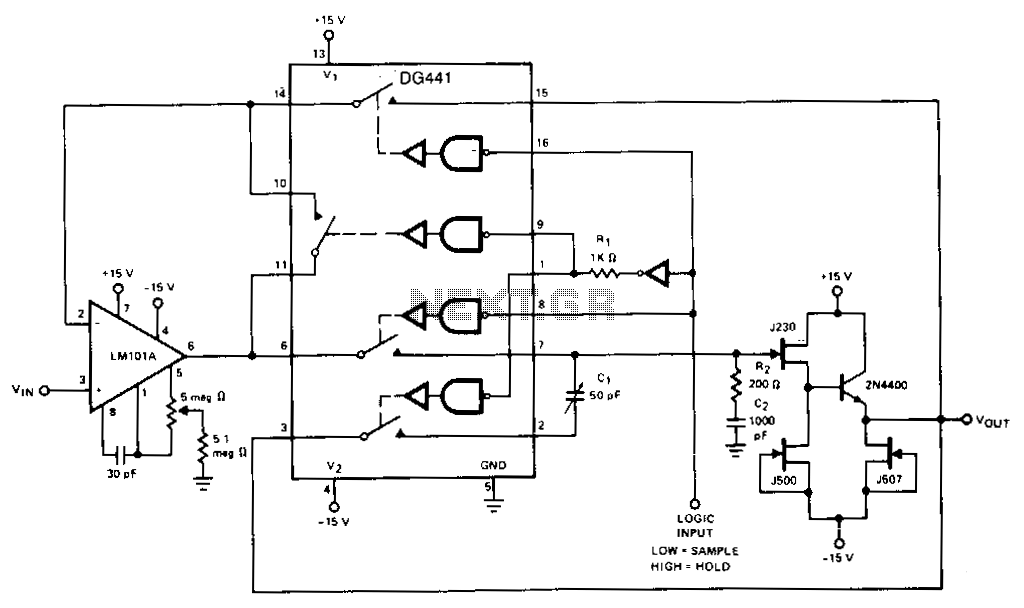
Sample-and-hold
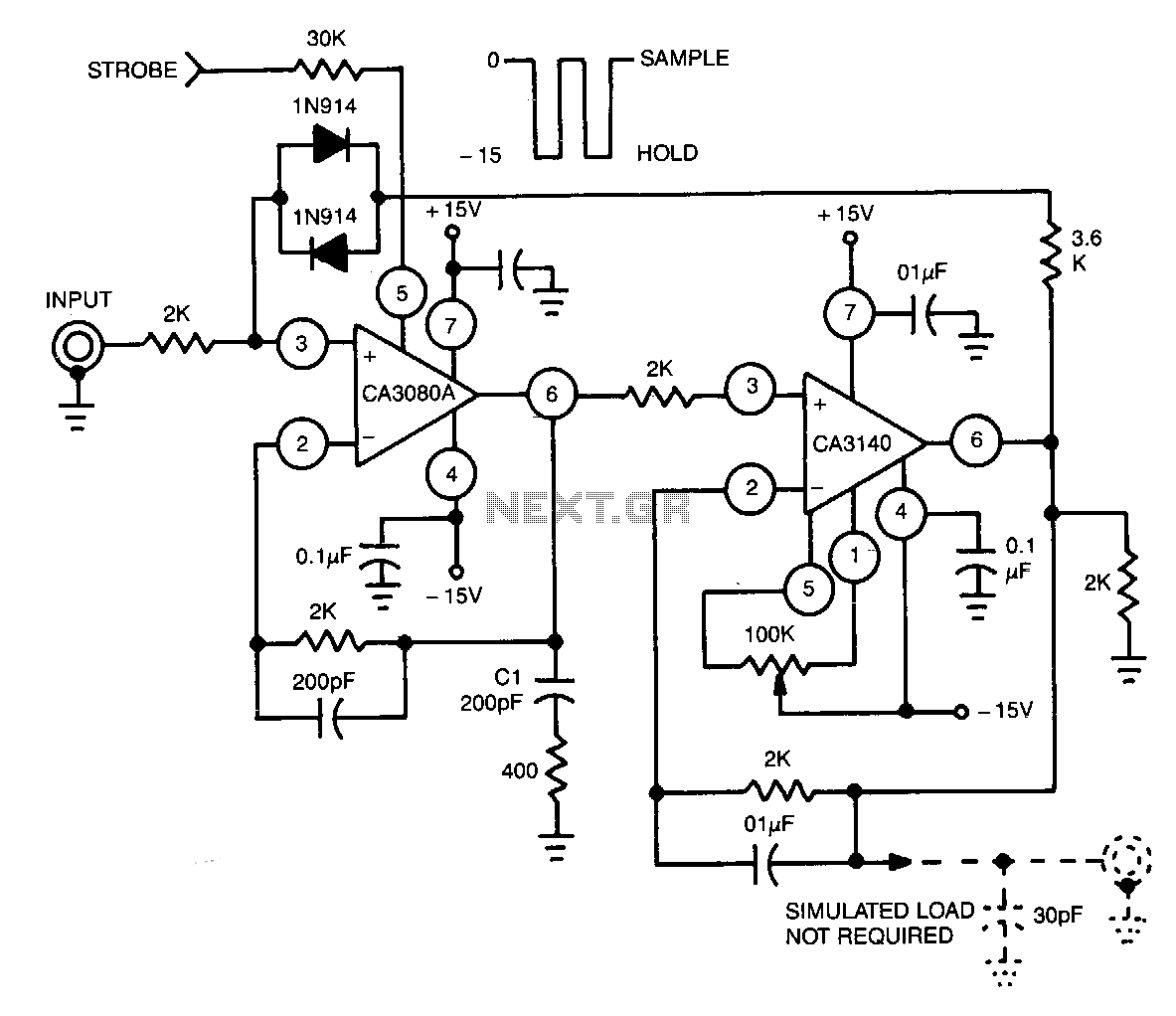
This circuit utilizes a CA3140 BiMOS operational amplifier as the readout amplifier for the storage capacitor C1, while a CA3080A variable operational amplifier serves as the input buffer amplifier and low feedthrough transmission switch. Additionally, offset nulling is achieved using the CA3140.
The circuit architecture comprises two main components: the CA3140 BiMOS op amp and the CA3080A variable op amp. The CA3140 is designed to function as a readout amplifier, interfacing with the storage capacitor C1. This configuration allows for effective signal amplification while maintaining high input impedance, which is critical for minimizing loading effects on the capacitor.
The CA3080A, on the other hand, is employed as an input buffer amplifier. This variable op amp is particularly advantageous in applications requiring low feedthrough, as it provides isolation between the input signal and the subsequent stages of the circuit. By utilizing the CA3080A as a transmission switch, the circuit can efficiently manage signal routing without introducing significant distortion or noise.
Offset nulling is an essential feature in precision applications, and the CA3140 facilitates this by allowing adjustments to be made to the output signal. This capability ensures that any inherent offset voltage can be compensated, thereby enhancing the overall accuracy of the readout.
In summary, this circuit design effectively integrates the CA3140 and CA3080A to create a robust system for signal processing, characterized by high fidelity and low distortion. The combination of these components ensures reliable performance in various electronic applications, particularly where precision and signal integrity are paramount.This circuit uses a CA3140 BiMOS op amp as the readout amplifier for the storage capacitor Cl, and a CA3080A variable op amp as input buffer amplifier and low feedthrough transmission switch. Offset nulling is accomplished with the CA3140.
The circuit architecture comprises two main components: the CA3140 BiMOS op amp and the CA3080A variable op amp. The CA3140 is designed to function as a readout amplifier, interfacing with the storage capacitor C1. This configuration allows for effective signal amplification while maintaining high input impedance, which is critical for minimizing loading effects on the capacitor.
The CA3080A, on the other hand, is employed as an input buffer amplifier. This variable op amp is particularly advantageous in applications requiring low feedthrough, as it provides isolation between the input signal and the subsequent stages of the circuit. By utilizing the CA3080A as a transmission switch, the circuit can efficiently manage signal routing without introducing significant distortion or noise.
Offset nulling is an essential feature in precision applications, and the CA3140 facilitates this by allowing adjustments to be made to the output signal. This capability ensures that any inherent offset voltage can be compensated, thereby enhancing the overall accuracy of the readout.
In summary, this circuit design effectively integrates the CA3140 and CA3080A to create a robust system for signal processing, characterized by high fidelity and low distortion. The combination of these components ensures reliable performance in various electronic applications, particularly where precision and signal integrity are paramount.This circuit uses a CA3140 BiMOS op amp as the readout amplifier for the storage capacitor Cl, and a CA3080A variable op amp as input buffer amplifier and low feedthrough transmission switch. Offset nulling is accomplished with the CA3140.
